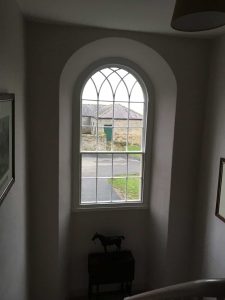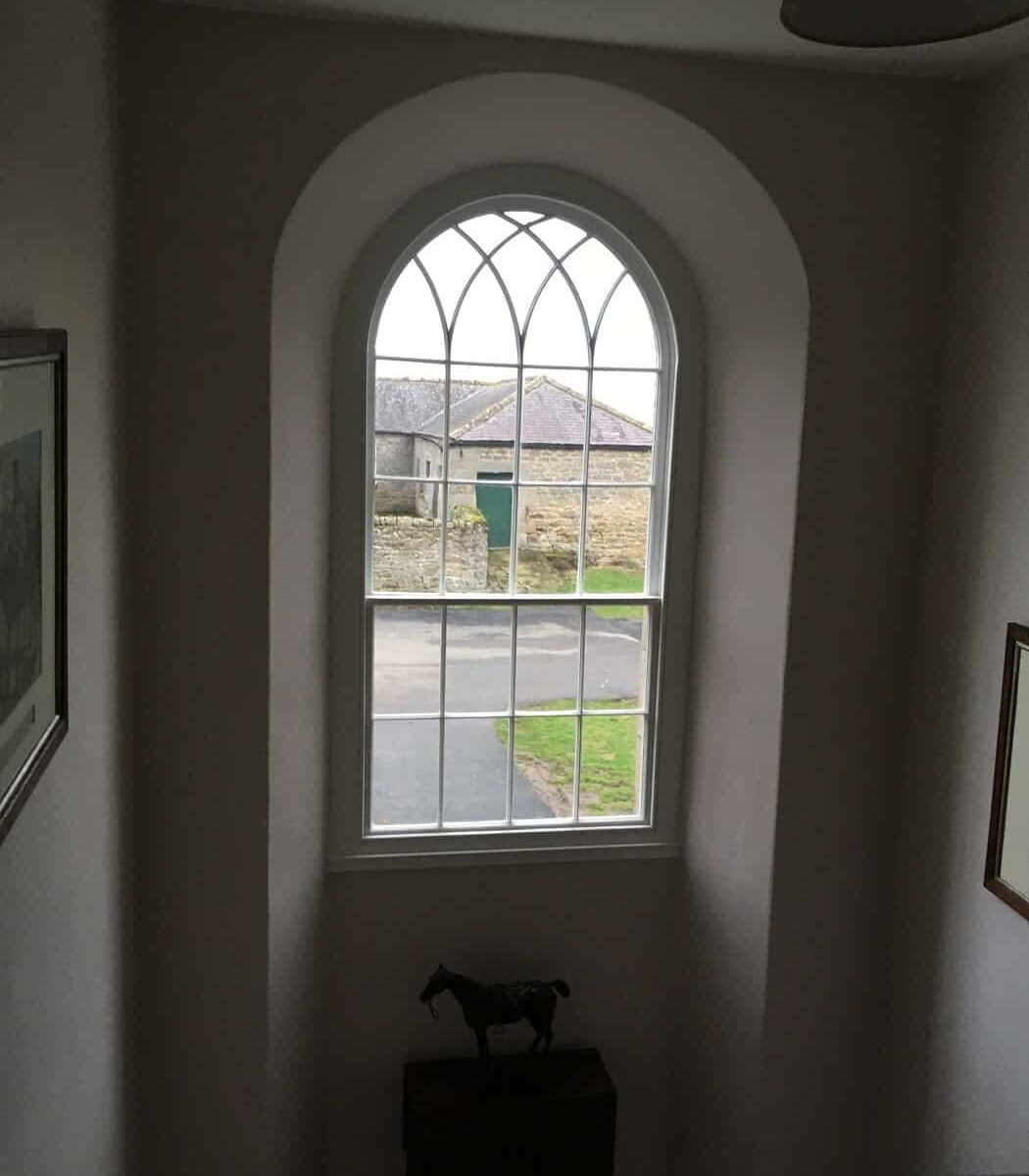Condensation on sash windows is a common and irritating problem for property owners. It happens when water vapour in the air cools and changes into liquid. This results in droplets forming on the glass. Not only does this limit your view, but it can cause more substantial issues. Wood damage and mould growth are notable examples. We want to explore the many types of condensation you can encounter. By knowing of them, you will be better prepared to deal with them. You will also see when you need to come to us to arrange services like sash window restoration in Northumberland.
External condensation
 Firstly, external/exterior window condensation happens when moisture appears on the outside of a window. This tends to happen when the external surface of your glass is cooler than the surrounding air. Water vapour in the air condenses on the glass. Exterior window condensation is most common in the morning or late at night. Here, outside temperatures are cooler, particularly after a rainy night or during humid weather.
Firstly, external/exterior window condensation happens when moisture appears on the outside of a window. This tends to happen when the external surface of your glass is cooler than the surrounding air. Water vapour in the air condenses on the glass. Exterior window condensation is most common in the morning or late at night. Here, outside temperatures are cooler, particularly after a rainy night or during humid weather.
If you see external condensation on your installations, it’s a sign your insulation is good. This is showing that heat isn’t escaping through the sash window. High-performance, high-energy windows have a higher chance of experiencing exterior condensation. They prevent the interior warmth from getting to the outer glass.
Internal condensation
As you might expect, internal condensation on sash windows happens when moisture appears on the inside surface. This happens when humid, warm air within the property encounters the cooler exterior of your window. It causes the water vapour within the air to condense into liquid droplets.
Internal condensation can result in problems like damaged window frames, wood rot, and mould growth. As a result, addressing the underlying causes is necessary. Do that to preserve a healthy interior environment. Contact us if you need the finest services for sash window restoration in Northumberland.
Between-pane condensation
Finally, we have condensation where moisture gathers between the panes of a double or triple-glazed window. This happens when the spacer or sealant holding the panes together falls. From here, the moisture-laden air can enter the space between the glass layers.
Why condensation is a problem
Now that you know about the types of condensation, we’ll talk more about why it is a problem.
A nuisance
For one thing, it is simply a nuisance. The sight of water droplets appearing on glass can frustrate people. This is especially true when it has an impact on your property’s aesthetic appeal. Also, the need for regular cleaning to remove the droplets can take time. It becomes inconvenient.
Frame damage
Another problem is that it leads to damaged window frames. If they’re wood, they are especially vulnerable. Persistent moisture can result in warping, rot, and frame deterioration with time. Your window’s functionality will suffer. It can mean you need sash window restoration in Northumberland or even more costly replacements in the worst cases.
Wall damage
Condensation also damages walls. Its effects go past the windows, as it can undermine the surrounding surfaces. It can cause damp patches and peeling paint. With time, it can even weaken the wall’s structure, resulting in repairs.
Damaged furnishings and curtains
Something else condensation can do is damage soft furnishings and curtains. If either are near your windows, they can also get wet because of all the moisture. It can lead to mould growth, unpleasant odours, and discolouration. Curtains can become soggy and damp, which will need regular washing or replacement. It can be inconvenient and expensive.
Efficient sash window restoration in Northumberland
At David Humble, we focus on the restoration, renovation, and repair of sashes. To make things as efficient as possible, we make use of a perimeter sealing system. Most importantly, we work from inside the property; it is safer and more effective.
So, if you need the foremost services for sash window restoration in Northumberland, call us. We can take care of any type, even windows that have had to deal with years of condensation.

